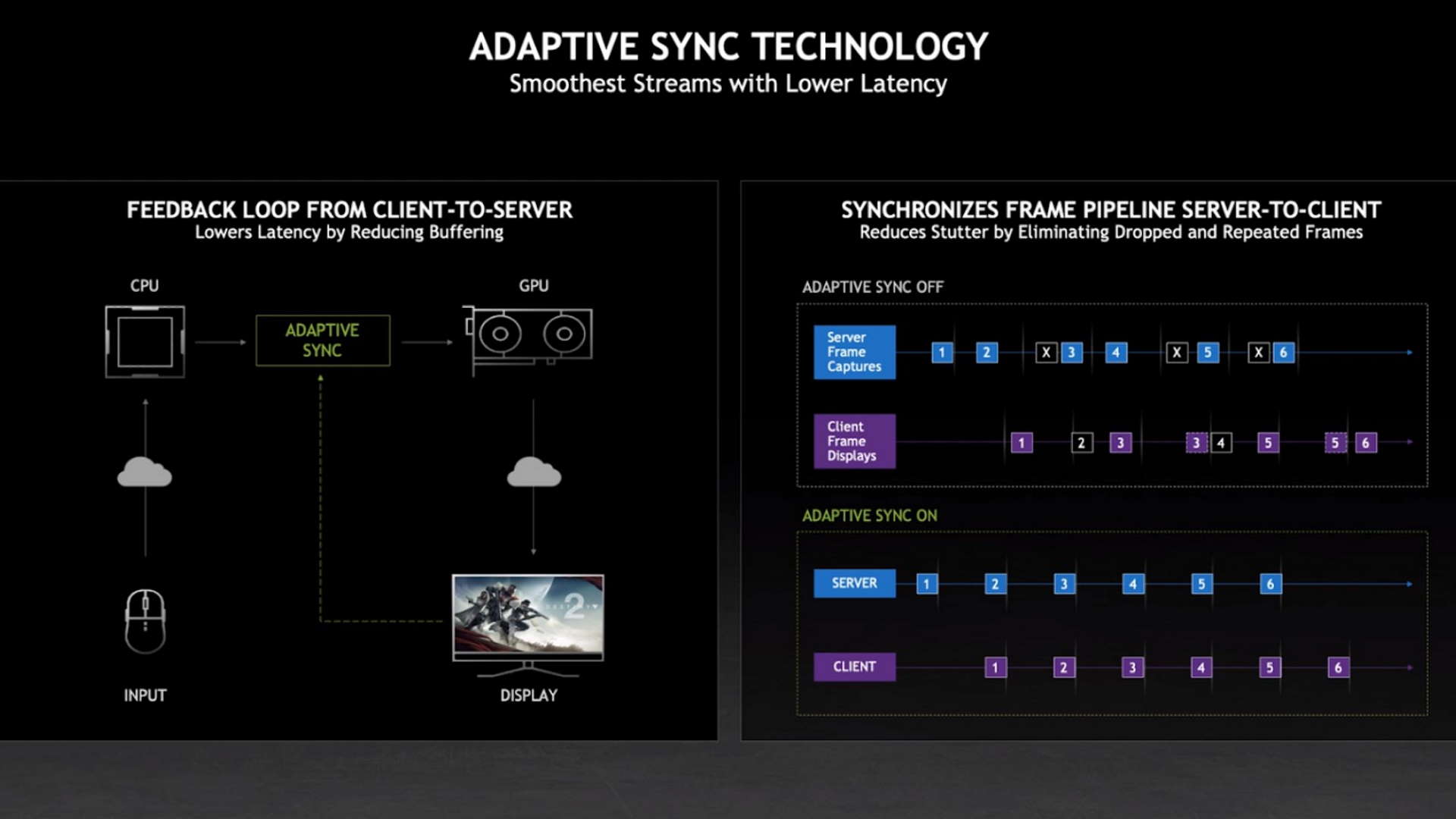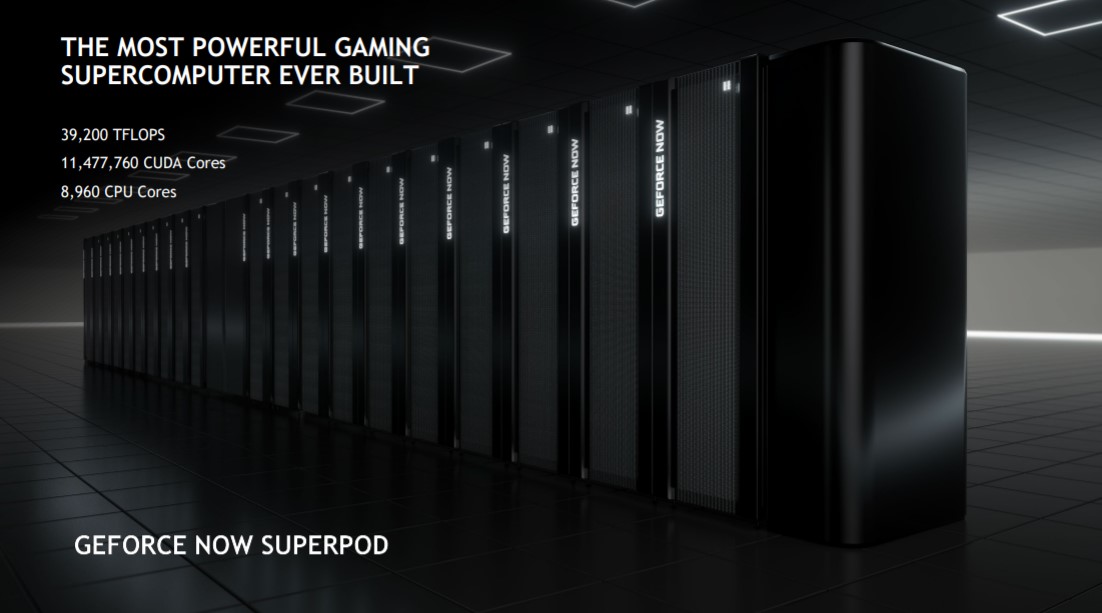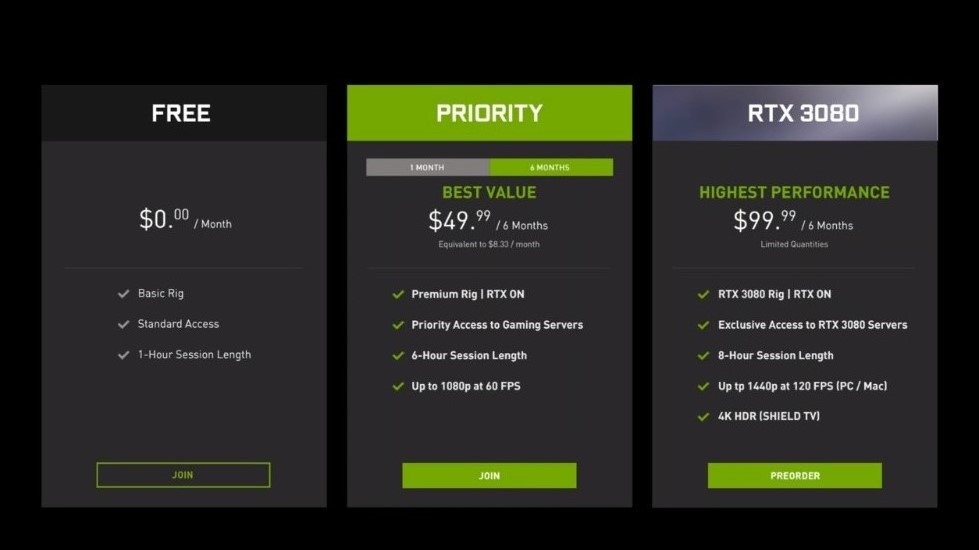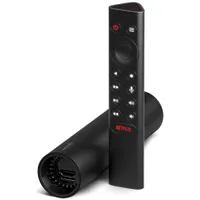Nvidia's RTX 3080 GeForce Now update just made the Shield the ultimate 4K HDR games console
When it's tough to make a hardware upgrade, a service which offers genuine high-end streaming becomes real tempting.
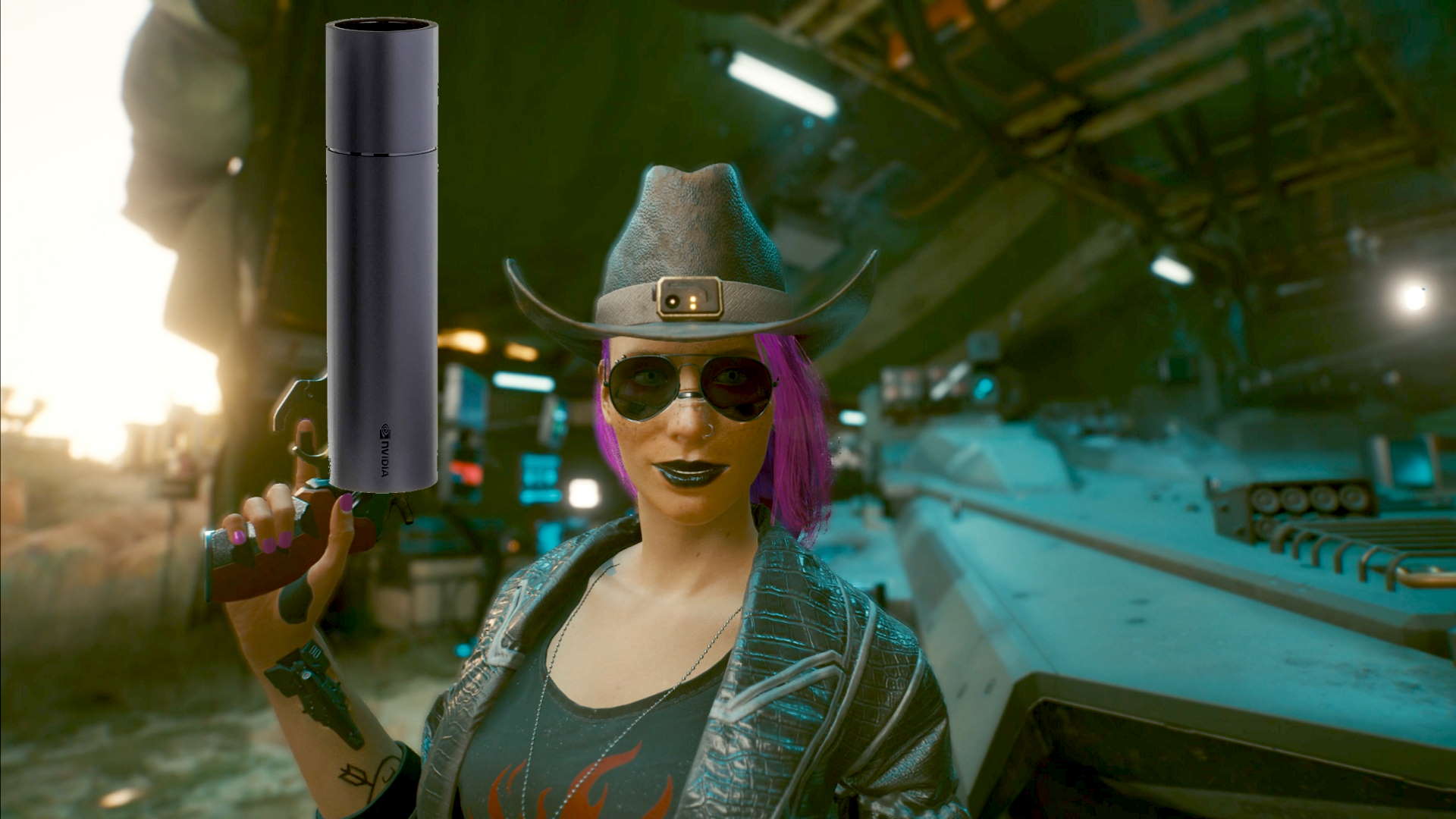
Arthur C. Clarke's Third Law states that any sufficiently advanced technology is indistinguishable from magic. And by those terms the new Nvidia GeForce Now RTX 3080 tier certainly feels like a druid has carved some runic symbol into the cylindrical casing of the Shield TV, making my Xbox Series X look a little weak in comparison.
This latest update to Nvidia's game streaming service, GeForce Now, has added Ampere technology at the server side, essentially delivering RTX 3080-level gaming performance to anyone taking out the highest tier of GFN membership. It's not just the base GPU hardware that has been updated either, there are networking tweaks to smooth out previous frame rate kinks, which only add to the magical feel of playing a 4K HDR game, on the highest ray traced settings, at high frame rates on the diminutive $150 Shield device.
I mean, the mystique mostly stems from the fact my knowledge of network protocols, packet delivery, and client-to-server latency could use a little update. If I were a wizard of the school of networking it probably wouldn't look quite so magical, but I'll be damned if, as a PC gamer, it doesn't work better than all my instincts tell me it should.
And, at a time when physical hardware is hard to come by—whether we're talking about the latest games consoles, or graphics cards—a service that is able to offer high-end PC gaming on practically any networked device, is a powerful proposition.
I've been using GeForce Now on and off since it first launched in beta, and the actual technology behind it has always been pretty impressive. But, as with any streaming service it's never been a gaming experience that's indistinguishable from playing on a local machine; whether that was due to inevitable network latency or visual artifacts born of whatever compression tech was needed to fling game data quickly and smoothly around the land.
But my recent experiences have been different.
I recently jumped back in to try a proper play through of Control—without Jacob killing my save half way through in the name of benchmarking—while pinned to my sofa under a sleeping-but-needy infant. My Priority level tier, which offered RTX 20-series GPU performance at 1080p meant I was playing a buttery smooth FHD version. And it played brilliantly, while offering ray tracing support, too. The addition of the Shield's 4K upscaling meant it looked pretty good on the Philips Momentum 55-inch 4K screen I was playing on.
Keep up to date with the most important stories and the best deals, as picked by the PC Gamer team.
My Shield isn't wired in, either, making it all the more impressive that it seemed as smooth and as responsive as playing on my Series X console while I was playing over a 5GHz WiFi connection. Part of that silky frame rate is down to the recent addition of Adaptive Sync technology, which synchronises the delivery of individual frames from the server to the client in order to reduce buffering and dropped or repeated frames.
Suddenly my $150 Shield device is an all-conquering 4K gaming powerhouse.
But now I've gotten to test the RTX 3080 update, which has recently been made available to the London-based EU West server, and the step-up in fidelity is tangible on a 4K HDR display. Control is now crisper, with more detail in the ray traced reflections of every shiny corridor floor of the Oldest House. With DLSS enabled the game isn't actually rendering at 3840 x 2160, but the joy of the latest version of Nvidia's upscaler is that it still looks pin-sharp outputting at a 4K resolution on a native 4K panel.
And it's still smooth. Even streaming a 4K game across a 5GHz network I saw no hint that my 100Mbps network was struggling with the effort. My upload speed is miserly, yet that still made no difference to whatever latency is lying there.
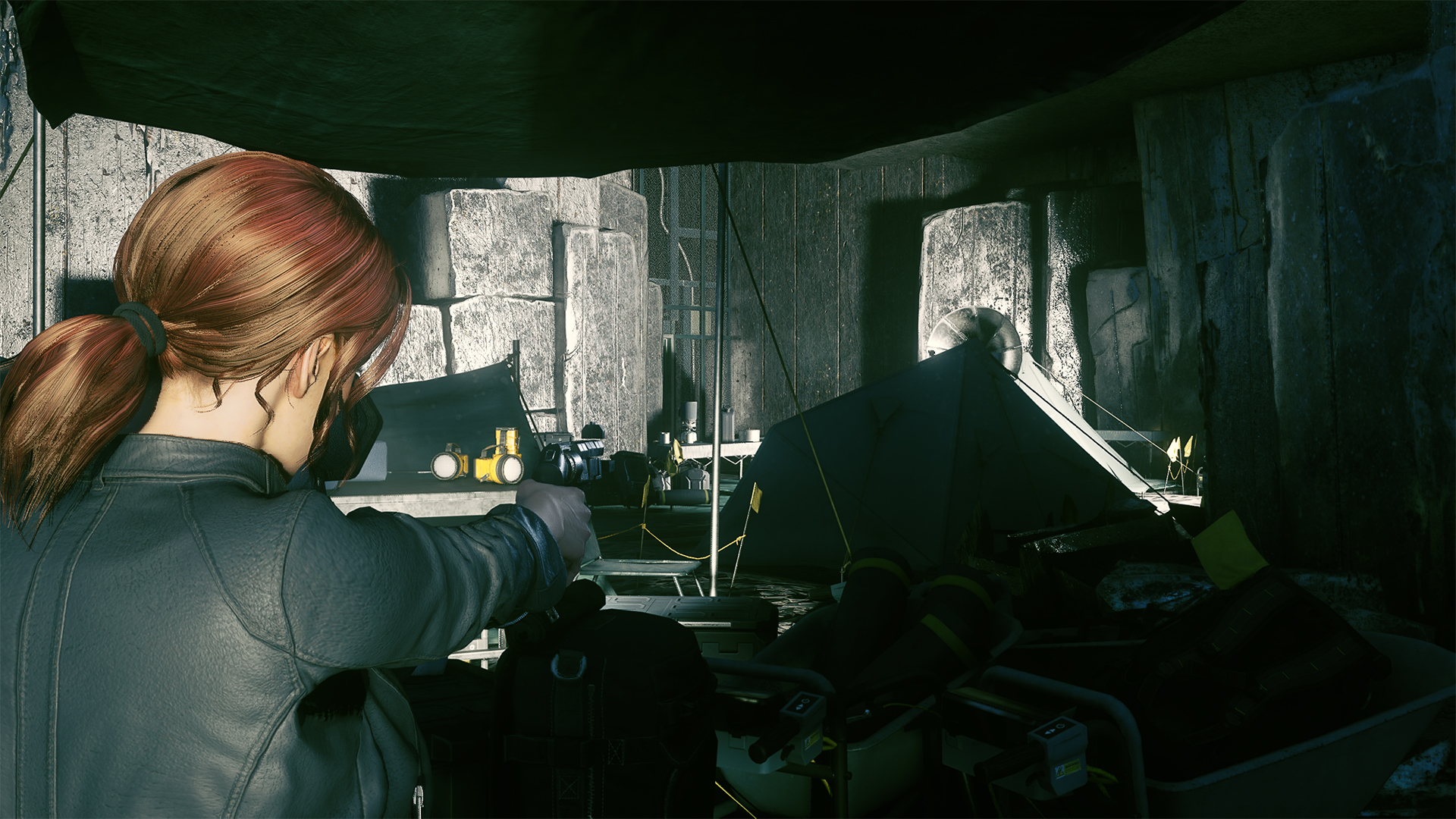
And Cyberpunk 2077 is now, y'know, playable at high settings, though that's one place where I definitely noticed some lag. That game is a resource hog on any system, and trying to run it at 4K with ray tracing, even with DLSS enabled, meant that frame rates weren't really high enough to deliver a latency level I was comfortable with. Knocking the settings down to 1440p, however, and the game still looks incredible, and runs brilliantly on the Shield. It's also the easiest method of actually getting a reliable HDR experience from a PC game.
With the remote power of the RTX 3080 GPU at its fingertips, suddenly my $150 Shield device is an all-conquering 4K gaming powerhouse.
But GeForce Now isn't something restricted to the Shield by any means. It's basically available to almost any networked device, from phones to set top boxes, to Chromebooks, laptops, and even Macs. It means that any laptop can be a powerful gaming laptop so long as its connected network is strong enough.
Maybe you've got a budget machine, with a low-end discrete GPU in it—something like a GTX 1650—but with a 120Hz screen attached to it. GeForce Now will actually take advantage of that panel, delivering up to 1440p at 120 fps. Though it's worth noting that, if you're connecting through a browser such as Chrome, you will still be limited to 1080p60.
So far, so very positive.
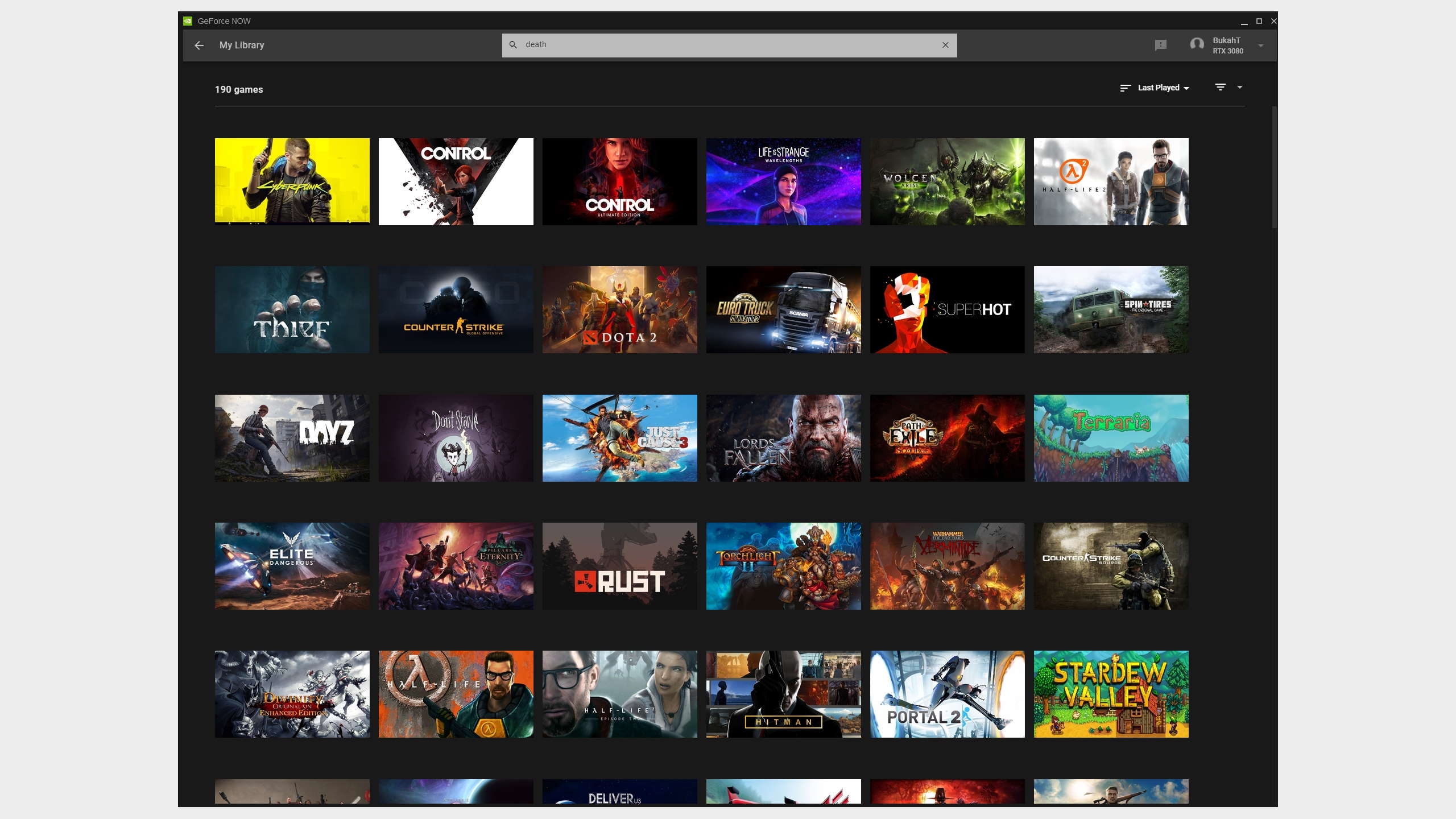
But there are necessary caveats to remember when we talk about GeForce Now. The way it works is by hooking into your existing game libraries on Steam, Epic, GoG, Origin, and Ubisoft Connect, allowing you to play any game that sits in the venn diagram of games you own and games GeForce Now can stream. Sadly that intersection doesn't encompass all your games because there has been a long publicised battle between certain devs, publishers, and Nvidia over who gets money for streaming games.
The short of it is that, though games are being added all the time, companies can pull games from the service at any point and you'd lose streaming access. You'd still own the game on PC, if you had a system that could run it, but if you buy a game it's never tied to GFN. Case in point being Rockstar—it removed all its games from GeForce Now when it tied Red Dead Redemption 2 exclusively with Stadia
There are also some games that never made it to GeForce Now for whatever reason; you'll not find two of my most-played games there either. I like the kicking of balls, and also the theory behind the kicking of balls, yet neither FIFA nor Football Manager are available over GeForce Now.
But there are still thousands of games on the platform, it's just that there may well be certain titles you are particularly wedded to that will never find a streaming home with Nvidia's service. That, unfortunately makes it a rather more volatile game library than we'd want, or than you'd get from a local system, whether console or PC.
You are also wholly reliant on a robust network infrastructure for your GeForce Now experience. If it's not possible to wire whatever machine you're using into the network, or the WiFi isn't strong enough where you're playing, you'll find visual artifacts creeping into games as the service drops resolution and bit rate to cope.
Nvidia's estimates suggest that for the 1440p, 120Hz level on PC you'll need a 35Mbps connection, while the 4K HDR of the Shield requires 40Mbps.
It's also going to depend on how close you are to one of Nvidia's new Ampere x Threadripper-based SuperPods, but you can check the availability of RTX 3080 tier hardware near you via Nvidia's network status page.
Though if the network goes down entirely then there's nothing there for you at all.
We also don't yet know how much capacity Nvidia has with its SuperPods at launch, so if there is great demand you may still be waiting for access to RTX 30-series hardware, just like the folk waiting in line at Best Buy. Nvidia is still noting the RTX 3080 tier as 'Limited Quantities'.
But, for a dedicated PC gamer, with an existing library of games—many of which will likely be accessible via GeForce Now—the service is the perfect upgrade when you can't physically upgrade. It's also pretty affordable, too. Nvidia will lock you in for a full six months if you want to go the RTX 3080 route, costing $99.99 (£89.99) for half a year's access. The Priority tier, however, is available either as a monthly sub, or in six month blocks. Monthly access to the RTX 20-series tier, restricted to 1080p60, is $9.99/month or $49.99 for six months.
There is also a free tier, with a lower-spec rig, 1 hour session limits, and the prospect of potentially having to queue for a spot on one of the streaming machines. But it's a good way to check out if the library fits what you want to play.
The subs, especially the RTX 3080 one, can look pretty steep, but put against the cost of a Series X, for example, it's really not that bad. If we take the cost of a Shield, an Xbox wireless controller, and a year's worth of top-end GeForce Now, that comes to $400. That's less than the cost of a Series X, if you can find one, and still gives you $100 to spend on games to play on the service.
| Header Cell - Column 0 | GeForce Now RTX 3080 + Shield + Xbox wireless controller | Xbox Series X + Game Pass | Xbox Series X + Game Pass Ultimate |
|---|---|---|---|
| One year 4K HDR gaming | $400 | $620 | $680 |
| Three years 4K HDR gaming | $800 | $860 | $1,040 |
Look at it over the maybe three-year lifespan of a traditional PC upgrade cycle, and the costs would seem to sway in favour of the Xbox. But then you have to take into account the cost of console games, and even if you went the most cost effective route, with Game Pass, you end up paying more over those three years than for a Shield with the top tier of GeForce Now.
So yeah, from where I'm sitting—on my sofa, with my pink Xbox pad connected via GeForce Now to a 4K HDR TV—Nvidia has made the little Shield into the ultimate next-gen console. And you can buy one right now without having to wade through fruitless stock update twitter accounts and out of date web pages.
Nvidia Shield | 4K | HDR | Android TV | $149.99 at Amazon
I would be lost without the Shield right now, as a dedicated cord-cutter this is what powers my TV. It's also the PC gamer's best friend, allowing you to stream directly from your Nvidia-based desktop rig to your big screen TV. That and GeForce Now makes it a hell of a 4K-toting, HDR lovin' package.

Dave has been gaming since the days of Zaxxon and Lady Bug on the Colecovision, and code books for the Commodore Vic 20 (Death Race 2000!). He built his first gaming PC at the tender age of 16, and finally finished bug-fixing the Cyrix-based system around a year later. When he dropped it out of the window. He first started writing for Official PlayStation Magazine and Xbox World many decades ago, then moved onto PC Format full-time, then PC Gamer, TechRadar, and T3 among others. Now he's back, writing about the nightmarish graphics card market, CPUs with more cores than sense, gaming laptops hotter than the sun, and SSDs more capacious than a Cybertruck.
